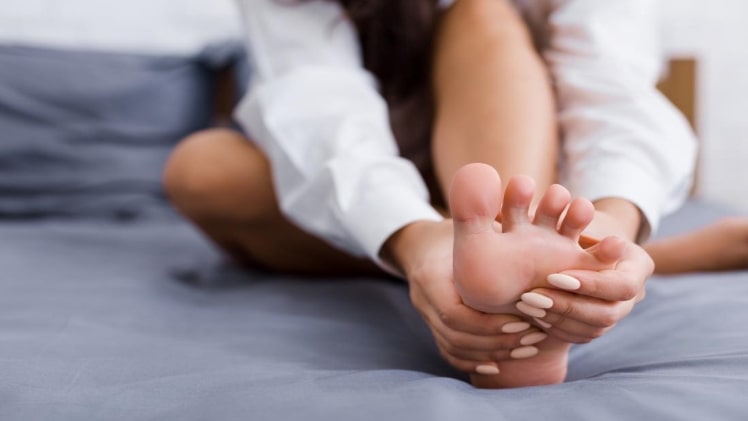The spinal canal is located within the spine. The delicate spinal cord and nerves that flow to the legs are encased in a framework of bones and ligaments. As a result, the spinal canal serves as a bone barrier. The phrase “spinal canal stenosis” describes the narrowing of the spinal canal, which reduces the amount of space available for nerves and arteries. At the level of the lumbar spine, the spinal canal is frequently constricted.
In older people, lumbar spinal canal stenosis is a relatively prevalent condition. A narrowing of the spinal canal affects one out of every five people over the age of 60.
What causes lumbar spinal canal stenosis and how does it happen?
The narrowing (stenosis) of the arteries might be congenital or acquired. Spinal canal stenosis is caused by a combination of events in many situations.
Wear causes the vertebral joints to expand (arthrosis) and the joint capsule and surrounding ligaments to thicken, diminishing the spinal canal’s diameter. Further narrowing may be aided by bulging discs. The nerves that travel through the spinal canal are squeezed, resulting in the classic symptoms.
The following are the most typical causes:
- Ossification of the vertebral bodies and joints between the vertebrae, thickening of ligaments and joint capsules, bulging discs, and slipping vertebrae are all signs of wear and strain.
- Idiopathic spinal stenosis is a condition in which the spinal canal narrows without a known reason from birth.
The height of the intervertebral discs reduces as a result of age-related wear and/or genetic predisposition, and the space between the vertebral bodies decreases. The segment’s height is reduced, which might result in the intervertebral disc bulging into the spinal canal (protrusion) on the one hand, and the ligaments connecting the vertebrae no longer being taut on the other. The ligaments that form as a result of this might narrow the spinal canal.
The damaged spinal segment’s mobility may improve as well. The facet joints (joints between the vertebrae) are put under more tension as a result, and they react with bony attachments. The aforementioned adjustments may cause the section to become unstable. As a result, a so-called sliding vertebra emerges, which is no longer rigidly attached and narrows the already restricted spinal canal even further. Nerve roots in the afflicted segment are compressed as a result of this.
Standing increases the strain on the nerves due to the greater curvature of the lumbar spine. The strain on the nerve roots and their blood supply rises with physical exercise – merely walking is frequently enough – causing the characteristic pain and discomfort spreading into the legs.
What are the indications and symptoms of spinal stenosis?
The lumbar spine’s spinal stenosis, also known as spinal canal stenosis, is a major cause of walking difficulty in the elderly and is often neglected by clinicians. The nerves that travel through the spinal canal get constricted as the canal narrows. Pain, weakness, or sensory problems in one or both legs are common symptoms that appear within a few minutes of walking and can cause severe limits in people afflicted. The symptoms presented are novel in terms of detecting spinal canal stenosis. Pain can be induced during a physical examination by gradually bending the trunk backwards (lordosis). If the pain is relieved by doing the reverse action – leaning forward with support from the hands – the doctor will have valuable information for the diagnosis.
Studies demonstrate that surgery is more effective than non-surgical treatments. Microsurgical excision of superfluous tissue and release of restricted nerves is the preferred procedure. The surgery has an immediate effect, has a minimal complication risk, and in 8 out of 10 patients, it results in a considerable long-term improvement.
What is the procedure for treating spinal canal stenosis?
Conservative treatment
The severity of the clinical symptoms determines how spinal stenosis is treated. Conservative (non-surgical) therapy is always attempted initially in the event of moderate symptoms. The spine is the centre of this treatment. In many situations, physiotherapy exercises, heat treatments, and massages provide temporary relief. Painkillers and anti-inflammatory medicines are also used to alleviate the discomfort. Essentially, positions that bend the lumbar spine into a hollow back should be avoided. Spinal stenosis surgery is needed in the most severe instances.
Symptoms can be alleviated with conservative treatment. The use of drugs, physiotherapy, and physical therapy is frequently mixed (multimodal therapy concept).
Surgical Treatment
A spinal canal stenosis operation is a technically complex technique that should only be performed by expert surgeons in specialised hospitals like Vertos Med Inc. Depending on the extent and origin of the spinal canal stenosis, a variety of surgical treatments are possible. The operation’s main goal is to alleviate (or “decompress”) the site where the nerves are squeezed.
Microsurgical or endoscopic interventions (extremely small access, surgeon works with a surgical microscope (endoscope)) are increasingly commonly used to do minimally invasive (surgery through a small window in the skin) treatments. A stiffening procedure may be required if there is spinal instability or curvature, or if the associated back discomfort is the primary issue.

